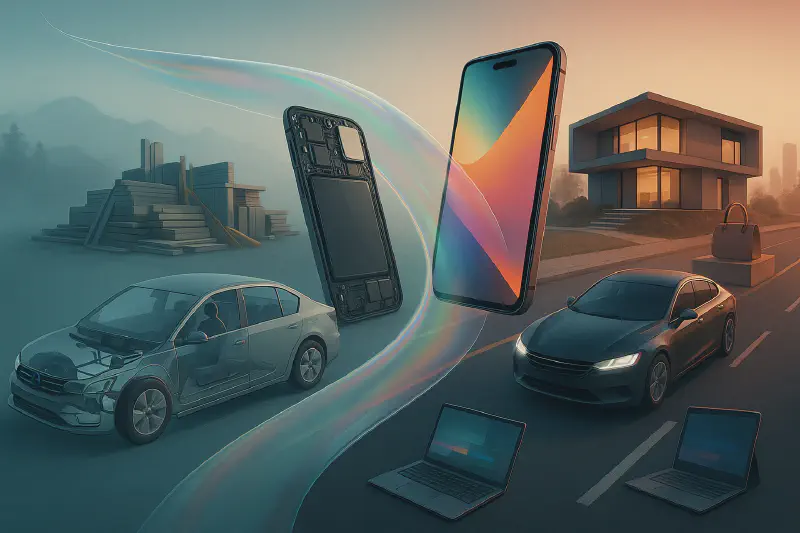The Enigmatic Wisdom of “常无” (No-Presumption) and “常有” (With-Presumption)
Have you ever looked at an everyday object and suddenly seen it in a completely different light? Perhaps you’ve gazed at your smartphone and, instead of seeing a communication device, momentarily perceived it as simply an arrangement of glass, metal, and plastic. This shift in perception touches on what Lao Tzu was describing in his enigmatic statement:
“故常无,欲以观其妙;常有,欲以观其徼”
This quote has puzzled Chinese philosophers for centuries. Even native speakers debate its precise meaning, yet within it lies a profound insight about how we perceive reality. For English speakers, this concept might seem especially abstract, but I’ll break it down into accessible terms.
Two Ways of Seeing the Same World
Let’s break it down:
- 常无 (pronounced “cháng wú”, meaning “maintaining emptiness”): A mindset free from presumptions, seeing things as they inherently are without social definitions
- 欲以观其妙 (pronounced “yù yǐ guān qí miào”, meaning “wish to observe its wonder”): With this presumption-free mindset, one can perceive the essence or mystery of things
- 常有 (pronounced “cháng yǒu”, meaning “maintaining existence”): A mindset that includes normal societal presumptions and definitions
- 欲以观其徼 (pronounced “yù yǐ guān qí jiào”, meaning “wish to observe its manifestations”): With this conventional mindset, one can understand practical functions and applications
Think about a car parked on the street. Most of us immediately see it as a transportation device. We know to open the door, start the engine, press the gas pedal, and drive from point A to point B. This represents the “常有” (with-presumption) perspective—viewing objects through their defined purpose and functionality.
But what if someone from 10,000 years ago encountered this same car? They wouldn’t see a “car” at all. Having no concept of engines, doors, or modern transportation, they might perceive it simply as a strange-looking metal structure. Perhaps they’d use it to block wind or as a shelter. For them, it’s just a physical object in the environment.
This represents the “常无” (no-presumption) viewpoint—seeing things without the layers of meaning we’ve collectively assigned to them.
The Car That Isn’t a Car
I recently had this experience while stuck in traffic. As my frustration mounted, I suddenly “saw” all the vehicles around me not as cars but as metal boxes with humans inside, moving incrementally along a strip of asphalt. The social meaning—status symbols, transportation devices, engineering achievements—temporarily vanished, and I perceived only the raw physical reality.
In that moment, my attachment to “getting somewhere quickly” dissolved. I was just a consciousness observing metal, glass, and flesh in motion. The experience was oddly liberating.
Have you ever had a similar moment of perception shift?
Why This Matters in Your Daily Life
You might be thinking, “That’s an interesting philosophical concept, but so what?” Here’s why this dual perception matters:
When you’re caught up in wanting the newest iPhone, latest fashion, or bigger house, you’re operating exclusively from the “常有” (with-presumption) mindset. You’re seeing objects primarily through their social meaning and assigned value.
But occasionally shifting to the “常无” (no-presumption) perspective can be profoundly liberating. That expensive car is ultimately assembled metal components. That designer handbag is processed animal hide with stitching. That mansion is configured wood, concrete, and glass.
This doesn’t mean material things have no value. Rather, understanding both perspectives gives you freedom from being unconsciously controlled by societal definitions of worth and success.
The Python Programmer’s Perspective
If you’re a programmer, you already understand this concept intuitively. When working with Python, you simultaneously hold two perspectives:
- The high-level functional view: “This code processes user data and generates reports”
- The fundamental view: “This is just a sequence of logical operations transforming electrical patterns in memory”
You can zoom in to see the raw mechanics or zoom out to work with abstracted functionality. Neither perspective is “more correct”—both are useful for different purposes.
Finding Balance in Modern Life
The beauty of Lao Tzu’s teaching isn’t about rejecting one perspective for the other. It’s recognizing the value of both views and developing the ability to shift between them fluidly.
When feeling overwhelmed by material desires, try the “常无” (no-presumption) perspective: see objects stripped of their social meaning. When needing to function efficiently in society, embrace the “常有” (with-presumption) view: recognize the practical utility of things as defined.
This mental flexibility creates space between you and your desires. You can still appreciate and use material things without being unconsciously driven by them.
Questions to Ponder
- When have you experienced a sudden shift in perception, seeing something familiar in a completely new way?
- Which areas of your life might benefit from temporarily adopting the “常无” (no-presumption) perspective?
- How might your relationship with material possessions change if you could easily shift between these two viewpoints?
The next time you find yourself craving the latest gadget or feeling inadequate because you don’t own certain status symbols, try seeing those objects through Lao Tzu’s eyes. What are they, really, when stripped of all human-assigned meaning? And what does your desire for them reveal about the presumptions shaping your perception of value?
In a world increasingly defined by consumption and material accumulation, this ancient wisdom offers a refreshing counterbalance—a way to participate in society while maintaining inner freedom.
